Money for Sun
The government is using fees built into electricity bills paid by citizens to buy power from solar power stations for 10 times the market price. The relevant ministry’s officials say that they do not know how such a high price for renewable energy was calculated in the first place.
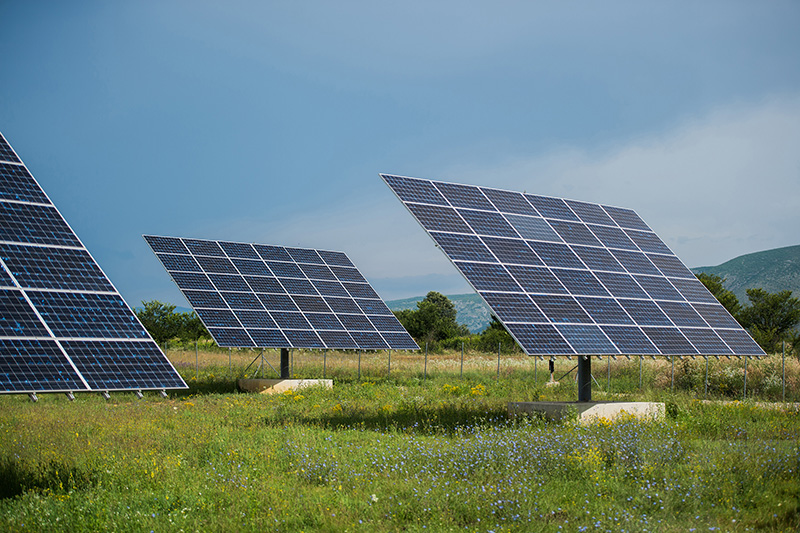 Tomings’ solar panels are perched on concrete poles and are synchronized with the sun to produce more electrical energy. (Photo:CIN)
Tomings’ solar panels are perched on concrete poles and are synchronized with the sun to produce more electrical energy. (Photo:CIN)
Building entrepreneur Miro Tomas collects money on heat from the sun even in rainy years. He is one of 16 owners of solar power stations in the Federation of Bosnia and Herzegovina (FBiH) who have a sweet deal: they sell power to publicly owned power utilities for a subsidized price 10 times higher than market value. This is courtesy of citizens and other utility customers that shoulder the price difference.
According to an investigation by the Center for Investigative Reporting (CIN) in Sarajevo), over the past two and half years solar power stations collected 1.82 million KM for 2,679 megawatts (MW) of electrical power. That would satisfy the energy needs of 300 of the 721,199 households registered in the FBiH.
The FBIH government established the high cost of renewable energy four years ago with a resolution. Meanwhile, the cost of energy has fell which does not influence the first round of privileged investors, but the new applicants who have yet to achieve such favorable selling terms.
Investors have announced construction of more than 230 solar stations, while 30-odd have been built so far. Of those, 16 sell power at the subsidized price which makes the investment profitable. The rest are waiting to be subsidized.
Citizens Pay Expensive Power
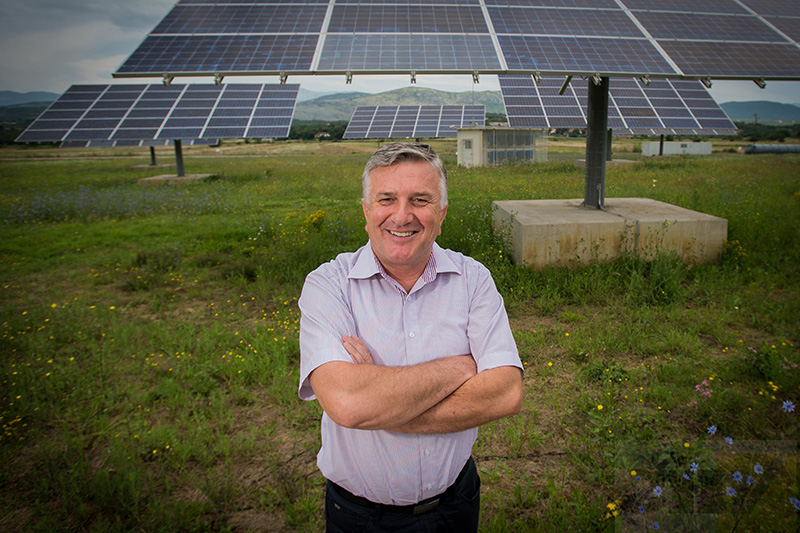 Miro Tomas said he bought 84,000 square meters of land from Stolac municipality to build 15 solar power stations. (Photo: CIN)
Miro Tomas said he bought 84,000 square meters of land from Stolac municipality to build 15 solar power stations. (Photo: CIN)
The resolution on the use of renewable energy sources was adopted in mid-2010 during the term of Vahid Hećo, then FBiH minister of energy, mining and industry. It authorized the public utilities — Elektroprivreda BiH of Sarajevo and a Mostar Elektroprivreda HZ HB—to sign contracts on subsidizing the stations’ owners for the following 12 years. Citizens and other customers are subsidizing renewable energy investors through fees built into into their monthly electricity bills: 30 pfennigs per a household. The fees end up on a special account which takes in more than 6 million KM a year.
Utilities pay for solar energy between 736 and 920 KM per MW depending on the station’s power. The guaranteed price is made of a referential price paid by the power utilities in the amount of 81 KM per a MW, and the rest is paid from the renewable resources account.
This makes it 10 times more expensive than a MW of power made from coal.
CIN found that the FBiH Parliament did not decide on the resolution even though energy is under its jurisdiction according to the FBiH Constitution. Also, the cost of renewable energy was not approved by the FBiH Regulatory Commission for Electrical Energy (FERK) which is in charge of the pricing. Finally, the relevant ministry has no document to explain the methodology of this price determination.
Yet the resolution was adopted.
News that solar power stations were profitable spread fast and already in 2011 and 2012, the Ministry had 110 projects for construction of solar power stations in its registry. The first kilowatts from the stations went to consumers in the beginning of 2012.
First Construction
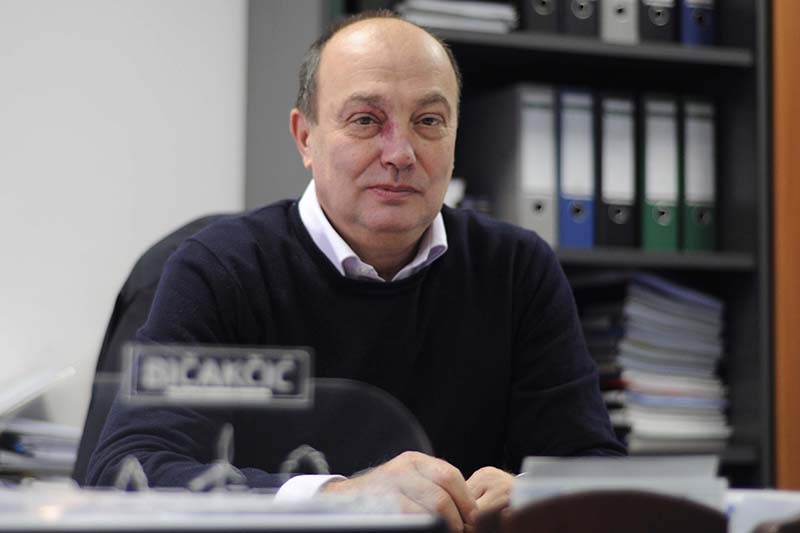 Edhem Bičakčić said BiH does much benefit from solar power stations because equipment is all bought abroad and local firms make money only from modeling and assembling the stations. (Photo: CIN)
Edhem Bičakčić said BiH does much benefit from solar power stations because equipment is all bought abroad and local firms make money only from modeling and assembling the stations. (Photo: CIN)
The owner Sadik Fatić and his son Selmir of a Kalesija-based Eko Energija built the first solar station in BiH. It took them two months to put up a 120 kW facility on the roof of a local sport center and it plugged into the Elektroprivreda BiH grid in March 2012.
Selmir Fatić told CIN that he and his father have traveled to EU countries to learn a lot about solar power stations. Still, it was the BiH pricing that made them decide to invest 800,000 KM in the construction of the power station. They calculated in the beginning that it would take eight years for them to recoup their investment.
Last year they collected 112,000 KM for power sold to Elektroprivreda BiH. Considering that the production is 30 percent higher than expected, they will recoup their investment in just six years, said Selmir Fatić. For the other six years of subsidies they will profit handsomely.
He added that the construction and maintenance of solar power stations is neither demanding nor expensive. Unlike owners of hydropower stations, they do not pay a concession fee. The Fatićis pay 1,000 KM in rent to the municipality of Kalesija for the use of the sport hall. So far they had no trouble in the station’s operation, and Selmir Fatić said that they had little maintenance to do.
“Some rain washes down what’s left from birds and I cleaned a bit during the winter.”
Three months after the Kalesija station started operation, another solar station opened in Ilijaš near Sarajevo. Edhem Bičakčić, a former FBiH prime minister and director general of Elektroprivreda BiH, built it on his estate. He owns a firm that designs and helps build renewable power sources. He had invested in a 10 kW micro station.
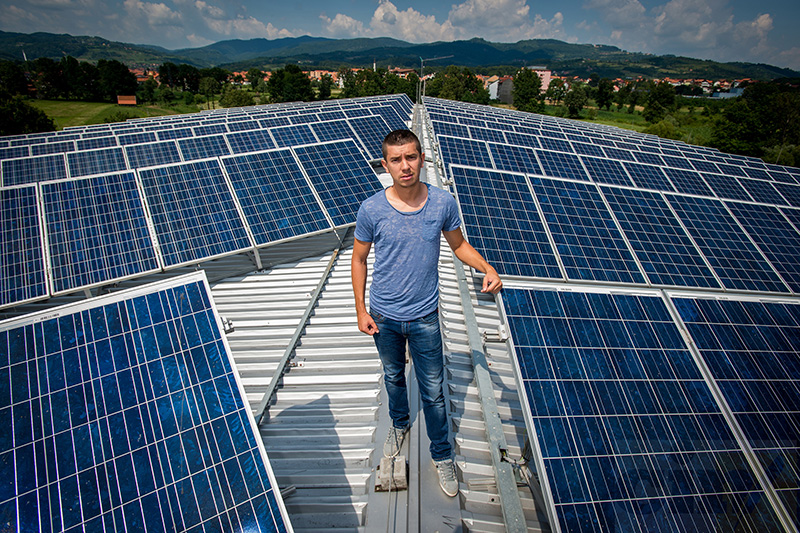 The owner of Eko Energija Selmir Fatić said that it took two months to build a solar power station in Kalesija. (Photo: CIN)
The owner of Eko Energija Selmir Fatić said that it took two months to build a solar power station in Kalesija. (Photo: CIN)
Elektroprivreda BiH buys electricity from the power station for 920 KM per a megawatt. Bičakčić collected 12,300 KM last year.
He told CIN that the construction cost him around 40,000 KM, an investment he would have back in three years. Bičakčić registered with the ministry two more power stations of the same power in Kiseljak and Visoko and a slightly bigger one of 30 kW in Hodovo near Stolac.
Asked if politicians had inside information about high subsidies and the profitability of the construction of solar power stations, he said: ”There are people who avidly follow this and react faster than others, and the rest are jealous.”
In 2012, Miro Tomas and his construction company Toming from Grude, built solar power stations in Grude and Stolac.
Tomas told CIN that his stations are more technologically advanced than those of others. In comparison to other stations in BiH, most of which are located on the ground and are turned in one direction, Toming’s collectors are perched on concrete poles and focus on the sun despite movement of the earth, which is why they produce more power.
Elektroprivreda HZ HB pays him 736 KM for a MW. His solar power stations each have a power of 150 kW. Last year he raked in more than 430,000 KM from them and he expects the same turnaround this year. Tomas invested more than 2 million KM in stations and expects to recoup that in seven years. Revenues show that this could happen sooner.
Money like Tomato
 Federation Minister of Energy, Mining and Industry Erdal Trhulj said he found no paperwork, upon taking office that explains why renewable energy power was subsidized at €420 per a megawatt, while the market price was between €40 and €50. (Photo: CIN)
Federation Minister of Energy, Mining and Industry Erdal Trhulj said he found no paperwork, upon taking office that explains why renewable energy power was subsidized at €420 per a megawatt, while the market price was between €40 and €50. (Photo: CIN)
The current FBiH minister of energy, mining and industry FBiH Erdal Trhulj, who entered office in the spring of 2011, did not like the renewable energy pricing that he had inherited.
“It’s the same when you adopt a tomato resolution that you’ll buy all produce during the year for 10 KM, while tomatoes on the market costs 1 KM.”
The mandatory buyout of high tariffed electricity was set to 12 years so that the investors could recoup their money. But, the ministry’s analysis show that this will happen between four and six years. The remaining time represents in effect a windfall for owners.
According to Trhulj, some of them get rich in three to four years.
Trhulj said that he has not found a document at the Ministry that would show how the price of the tariffs was calculated. Ministry officials explained to him, he said, that the price was based on “some experience” which was communicated at the meetings between Hećo and utility officials.
Hećo told CIN that the prices were based on regional experience “on several input parameters.” He explained that energy pricing was created by the ministry experts during his term when there was little interest for building solar power stations.
He said that for those reasons they did not review the prices even though the cost of equipment for solar power stations has plummeted with the availability of new cheap Chinese equipment.
His successor Trhulj said that he could not change the regulations that would deny the rights obtained by the owners of 16 solar power stations.
“If you were to stop it now, later you would pay both tariff and interest,” warned Trhulj about possible lawsuits.
However, the government could not continue with the resolution as it is either, because this would mean that it would subsidies renewable energy stations, including solar power stations, beyond its annual budget of 6.5 million KM. The citizens and other customers would have to shoulder up to five KM in price difference. The government needed to modify the existing resolution and stop signing up new investors or risk bankrupting the budget for the sake of high solar subsidies no longer justified by market realities.
Concessions Halted Construction in the RS
The owners of solar power stations in Republika Srpska (RS) only started receiving power subsidies this March. Ten power stations enjoy that privilege at the moment. The contracts will run out in 15 years, while the prices are 40 percent lower than in the FBiH. Despite this, interest in solar power stations has existed for some time, but red tape was more complicated than in the FBiH. Investors in the RS frequently build such facilities on buildings because the contract is more favorable than if they are installed on ground. However, until May of last year, only those with a concession were eligible for subsidies.The RS Law on Renewables and Efficient Cogeneration was adopted last May and it threw out the need to obtain concession licenses for power station of less than 250 kilowatts, say officials from the RS Regulatory Commission for Electrical Energy.
In the beginning of 2012, the FBiH government introduced a procedure that would decide whether new applicants ought to be subsidized. New criteria for the use of funds were established which say that the money will go for subsidies only inasmuch as there is on the account. There was money for seven solar power stations of up to 150 kW, for 25 of up to 30 kW and for 50 micro solar stations of up to 10 kW. During the year already all slots for the big power stations of 150 kW were taken. Those are the most profitable ones for the investors, but the most expensive for the state.
These changes have halted the plans of potential investors, including the politicians. CIN learned that some of those interested in building the power stations of the same size were Adnan Terzić, former chairman of the BiH Council of Ministers, and Amer Jerlagić, president of the Party for BiH, while Ivica Jurčić, former member of the FBiH Parliament for the People’s Party Work for Betterment, planned to build a 330 kW power station. All three said that the government’s change of the resolution and the introduction of the new rules have thwarted their plans.
The government’s new decisions have affected many of Toming’s plans. Back in 2011, the company applied for licenses to build another 17 solar power stations – 14 in the business zone of Hodovo near Stolac and three in Grude, and it went ahead and bought land on which the construction was planned. All power stations would have 150 KW of power. It managed to build only two.
Tomislav Prkačin from the Construction Department of Stolac municipality says that more than 70 firms bought land in Hodovo to build solar power stations. Five stations each of 150 kW have been built. Along with Toming, Stolac-based Solar Max and MK Group are also raking in high subsidies. Another two Stolac-based companies – HE Energy and Veliko Sunce – sell power at a price 10 times lower. These firms have applied for subsidies. Companies that sell power at the privileged price will sell at the low price too eventually – when their contracts have run out.
Tomas says that such price is not sufficient even to cover for the costs of securing his two stations.
Government’s Plan for Benefit of Solar Stations
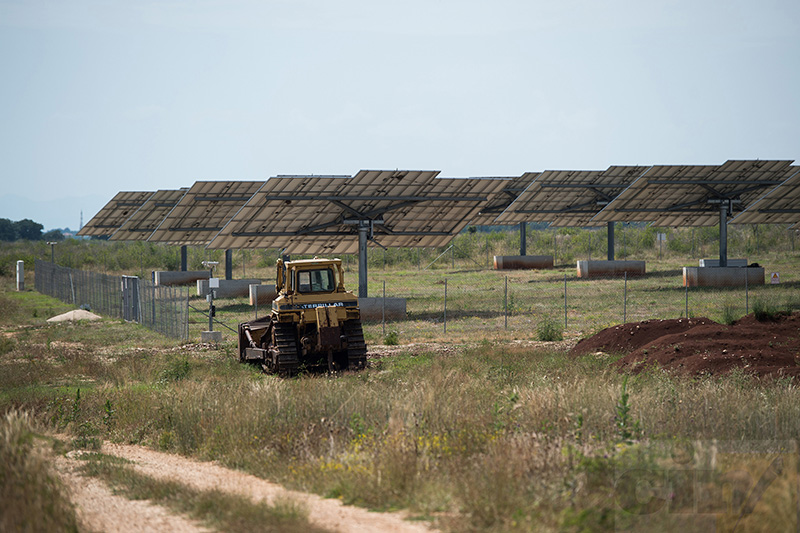 Seventy firms bought land for solar stations in the business zone of Hodovo near Stolac. Only five have been built. (Photo: CIN)
Seventy firms bought land for solar stations in the business zone of Hodovo near Stolac. Only five have been built. (Photo: CIN)
New possibilities for Toming and other companies opened with the passage of new solar energy laws in the past year. At the same time, the office of Renewables Operator was opened in Mostar. The public utilities have conferred their right to sign contracts and pay subsidies to the office. The law had done away the limits for signing of new contracts, while the FBiH government adopted in May an Action Plan for Utilization of Renewables until 2020.
In the beginning of summer, the government set the new energy pricing at a rate between 30 and 40 percent lower than the earlier ones. This time FERK was involved in the price setting. According to the plan, the government plans to subsidize 12 MW of solar power stations over the next six years, which is 10 times more than last year.
Trhulj announced a new government policy to subsidize more than previously micro power stations built on households’ rooftops. The plan shows that one-third of the projected capacities have been reserved for them, while the rest is planned for 150 kilowatts and higher power that are the most profitable for investors.
“I hope to build another one,” said Tomas, who planned another 15 power stations.
